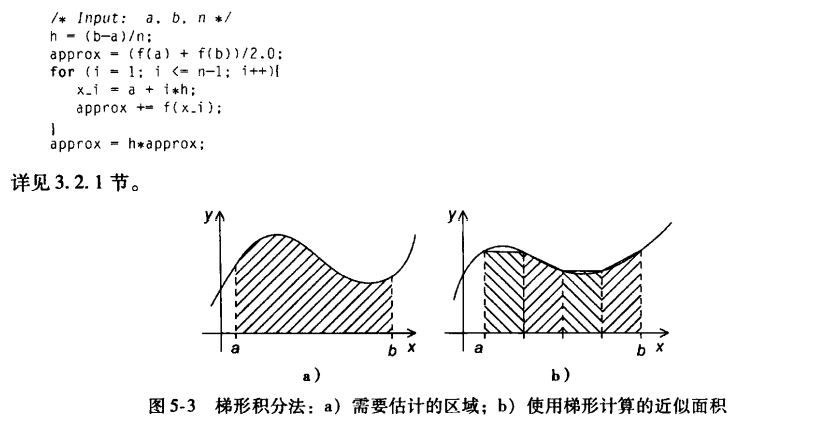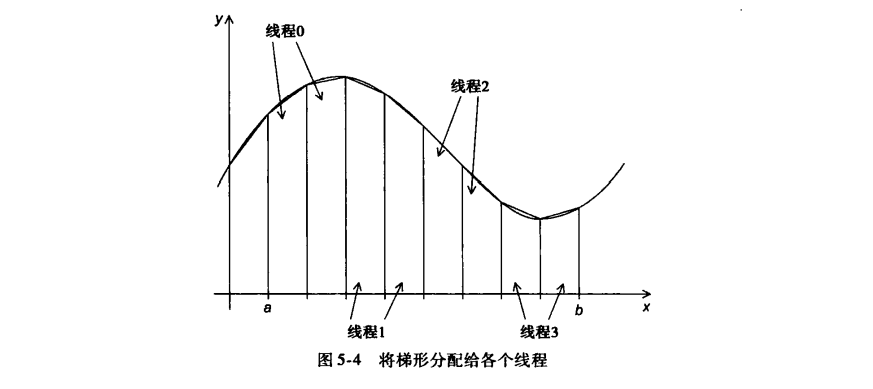OpenMP梯度积分法
1.梯度积分法


2.识别两类任务

- 单个梯形的面积计算
- 梯形面积求和
在2.1的任务中,没有任务间的通信,但这一组任务中的每一组任务都与2.2的任务通信
3.累加线程结果
使用一个共享变量作为所有线程的和 ,每个线程可以将它计算的部分结果累加到共享变量中,让每个线程执行类似下面的语句:
| #pragma omp critical
global_result += myresult;
|
竞争条件,使用临界区解决。保证每次只有一个线程执行这段结构性代码。
4.程序完整代码
1
2
3
4
5
6
7
8
9
10
11
12
13
14
15
16
17
18
19
20
21
22
23
24
25
26
27
28
29
30
31
32
33
34
35
36
37
38
39
40
41
42
43
44
45
46
47
48
| #include <stdio.h>
#include <stdlib.h>
#include <omp.h>
void Trap(double a,double b,int n,double *global_result_p);
int main(int argc, char *argv[]){
double global_result = 0.0;
double a,b;
int n;
int thread_count;
thread_count = 8;
printf("Enter a,b, and n\n");
scanf("%lf %lf %d",&a,&b,&n);
#pragma omp parallel num_threads(thread_count)
Trap(a,b,n,&global_result);
printf("With n = %d trapezoids, our estimate\n",n);
printf("of the integral from %f to %f = %.4lf\n",a,b,global_result);
return 0;
}
void Trap(double a,double b,int n,double *global_result_p)
{
double h,x,my_result;
double local_a,local_b;
int i,local_n;
int my_rank = omp_get_thread_num();
int thread_count = omp_get_num_threads();
h = (b-a)/n;
local_n = n/thread_count;
local_a = a + my_rank*local_n*h;
local_b = local_a + local_n*h;
my_result = (f(local_a) + f(local_b))/2.0;
for(i = 1 ; i<=local_n-1; i++){
x = local_a + i*h;
my_result += f(x);
}
my_result = my_result*h;
#pragma omp critical
*global_result_p += my_result;
}
|
5.总结
- 核心是拆分任务区域,把子任务分配到个个线程
- 共享变量的选取决定了可并行度
- 通过共享变量实现了归约的操作(这里使用到了临界区)
6.参考资料
并行程序导论 (美)Peter S.Pacheco


